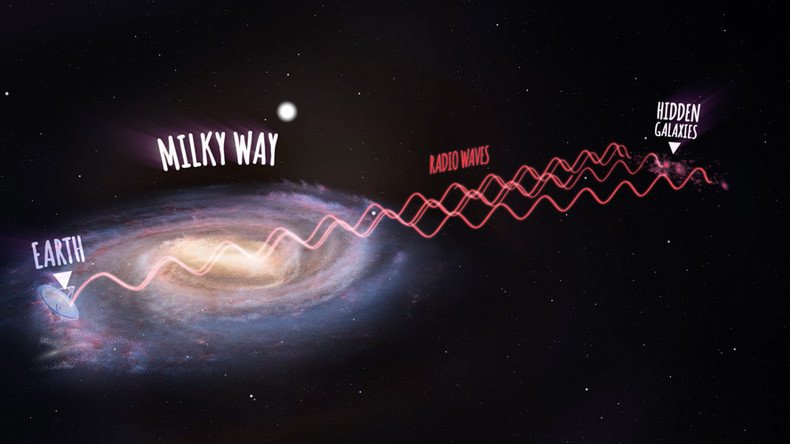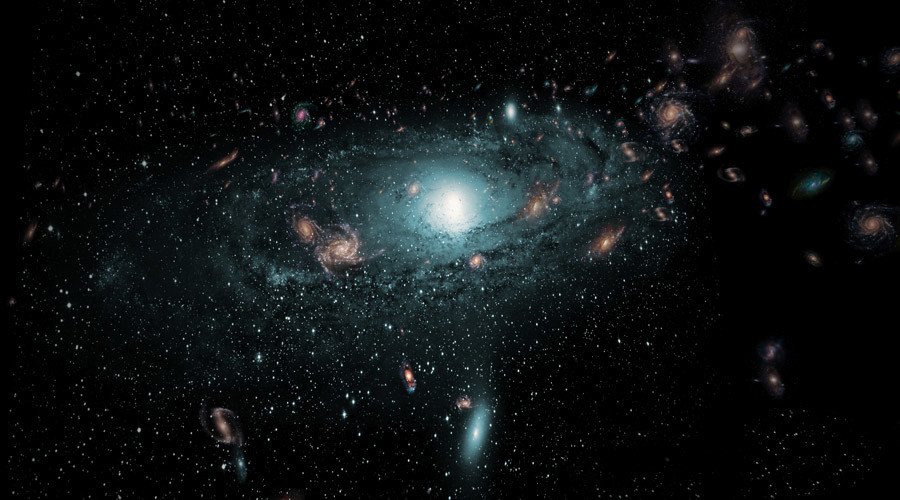Hundreds of galaxies discovered hidden behind Milky Way (PHOTOS, VIDEOS)

Scientists have finally mapped the final frontier, and it turns out that one of the most secretive areas of space is just beyond our own backyard – the Milky Way was found to be hiding hundreds of galaxies from eager astronomers.
Despite being just 250 million light years from Earth – very close in astronomical terms – it took researchers decades to map the distribution of the galaxies behind our own, the Milky Way.
The International Centre for Radio Astronomy Research (ICRAR) mapped 883 galaxies, new and old, in research published in the Astronomical Journal.

A team of international scientists have dubbed the area the “Zone of Avoidance.” Of the 883 galaxies mapped, over a third have never been seen before.
The astronomers used CSIRO’s Parkes radio telescope, which is famous for assisting with moon landings.
The telescope is equipped with an innovative receiver that allowed scientists see past the stars and dust of the Milky Way into a previously unexplored region of space.
“The Milky Way is very beautiful of course and it’s very interesting to study our own galaxy, but it completely blocks out the view of the more distant galaxies behind it,” lead scientist Professor Lister Staveley-Smith from The University of Western Australia node of the ICRAR said.
The discovery may also help explain the Great Attractor region, which appears to be drawing the Milky Way and hundreds of thousands of other galaxies towards it with a gravitational force equivalent to a million billion Suns.\
READ MORE: Monstrous gas cloud to smash into Milky Way Galaxy with ‘spectacular burst’
Scientists have been trying to get to the bottom of the mysterious Great Attractor since major deviations in universal expansion were first discovered in the 1970s and ’80s, according to Professor Staveley-Smith.
“We don’t actually understand what’s causing this gravitational acceleration on the Milky Way or where it’s coming from,” he said.
“We know that in this region there are a few very large collections of galaxies we call clusters or superclusters, and our whole Milky Way is moving towards them at more than two million kilometers per hour.”
This research identified several new structures that could help explain the movement of the Milky Way, including three galaxy concentrations (named NW1, NW2 and NW3) and two new clusters (named CW1 and CW2).
Observing radio waves is the only technique that allowed astronomers to view the hidden galaxies, and they were able to map the sky 13 times fast then previously by using the Parkes radio telescope.
“An average galaxy contains 100 billion stars, so finding hundreds of new galaxies hidden behind the Milky Way points to a lot of mass we didn’t know about until now,” University of Cape Town astronomer Professor Renée Kraan-Korteweg said












